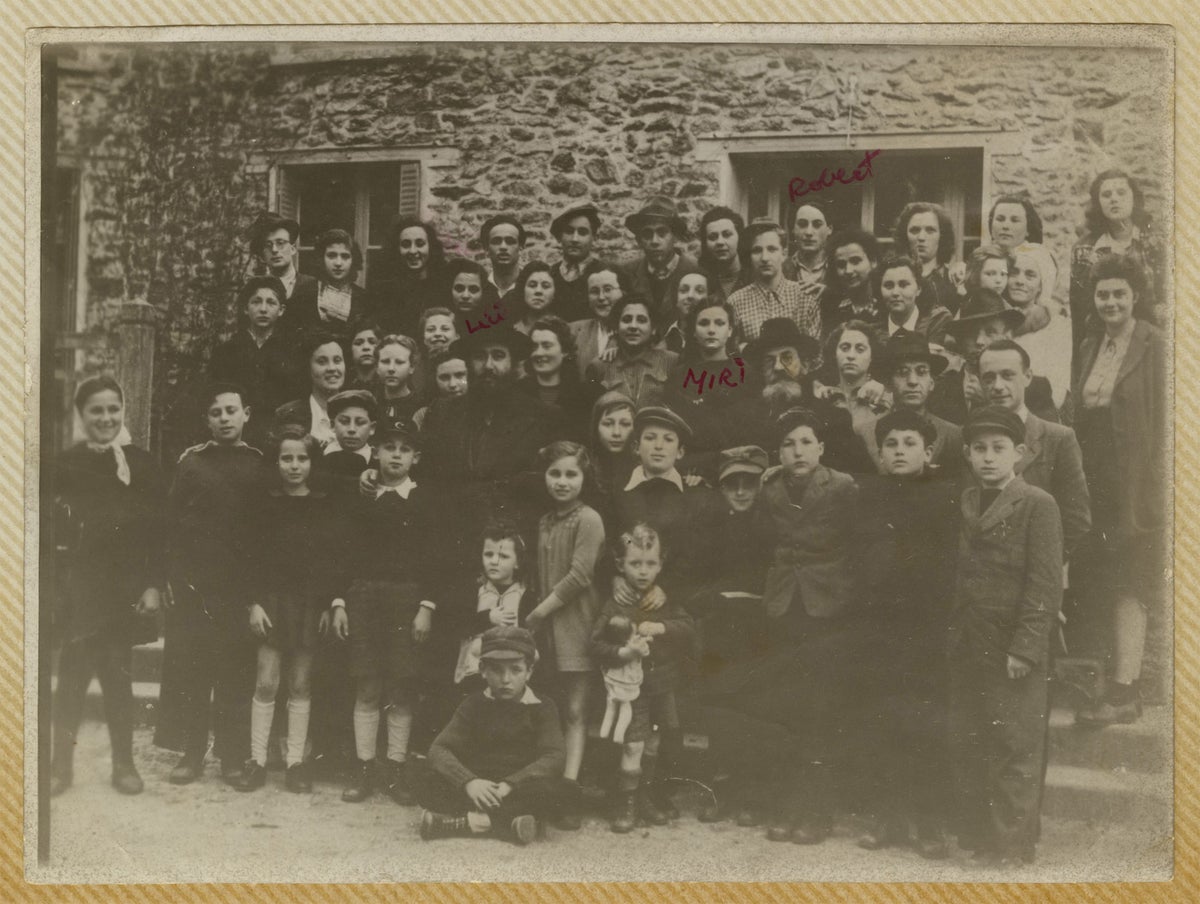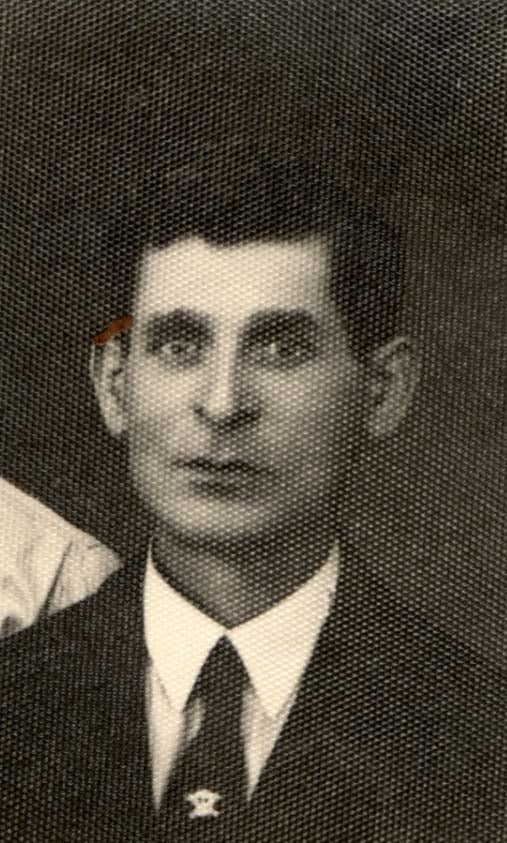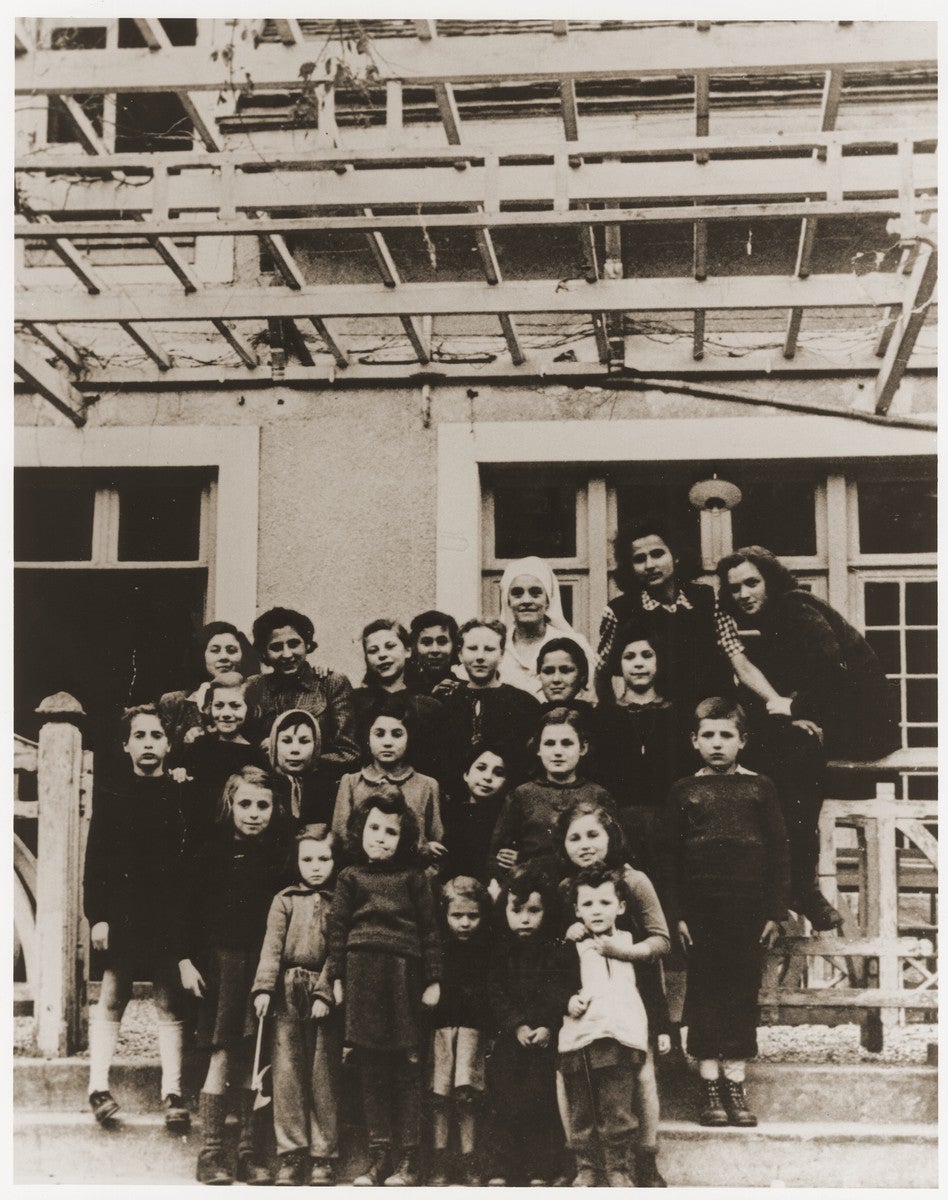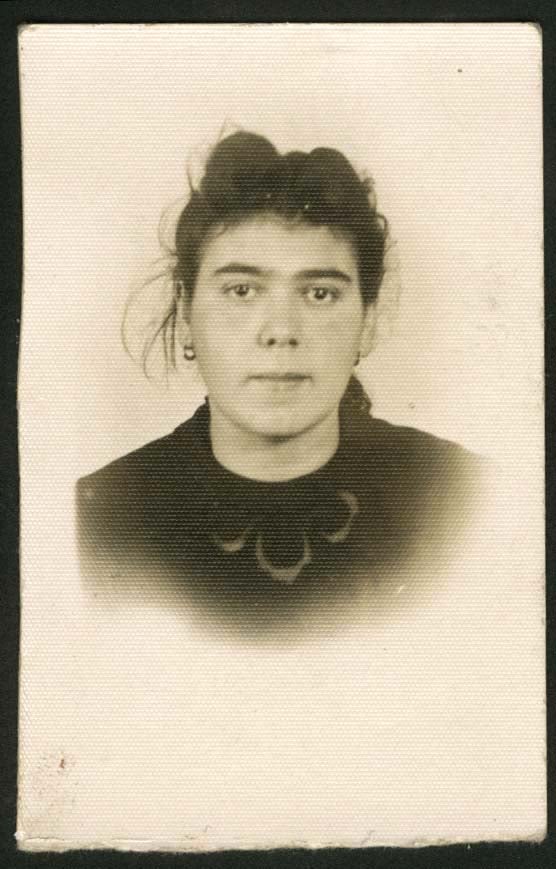
Blanche Fixler survived the Holocaust because her aunt sent her to an orphanage when she was six as the Nazis invaded Europe during the Second World War.
Her mother, grandmother and two older siblings were murdered with around 450,000 other Jews in the Belzec extermination camp in Poland, and her father ended up at a labour camp in Siberia.
She moved to the United States after the war, and assumed all of her family mementoes were long gone, especially since her family’s apartment in Krakow was ransacked by the Nazis during the German occupation.
Fixler, now 86 and living in New York, always wished she had photos from her earliest years of life.
Then in August, she received a phone call that stunned her: someone had found two group photos that showed her as a little girl in France. One of the photos, taken just after the war ended, included her aunt and two cousins.
“It meant more than you could imagine,” says Fixler, who as a child was named Bronia Bruenner.
The call came from Daniel Patt, a software engineer for Google and the founder of a website called “From Numbers to Names”, which uses artificial intelligence to find old photographs of loved ones and relatives lost during the Holocaust.
“It was incredible that he took it upon himself to do this kind thing,” she says, adding that he hand-delivered the photos to her in New York in October.
Patt’s website has links to archives that contain about 500,000 photos from museums such as Yad Vashem – the World Holocaust Remembrance Centre and the United States Holocaust Memorial Museum. Anyone can upload a photo of a Holocaust victim or survivor to the site, and it will compare the photo to its archives.
“A search might lead to never-before-seen photos of a loved one,” says Patt, 40. “It’s a way to bring that person back to them and feel that they’re still with them in some way.”

Once a photo is uploaded, facial recognition technology finds the 10 best potential matches among photos from the archives.
“Everyone can do a quick scan of 34,000 photos in the archives in about five seconds,” says Patt, noting that special request searches are also done once a day to compare faces to all 500,000 photos.
“It’s too cost-prohibitive right now for everyone to search all 500,000 images every time they come to the website,” he says.
Patt did a search for photos of Fixler after he spotted a museum post on Twitter from the United States Holocaust Memorial Museum about her that included an old photo of her with her aunt.
“I decided to run the photo through the site and found two World War II-era photos for Blanche,” he says.
He then tracked down her phone number and called her to tell her what he found. When he showed her the pictures, she confirmed they were indeed her and her family.
“It was a special and unforgettable day,” Patt says. “Blanche sang a little song she remembered from the orphanage after she saw the photos.”
Patt says he was inspired to start “From Numbers to Names” after a 2016 visit to the Polin Jewish history museum in Poland, where his ancestors are from.
“Three of my grandparents are Holocaust survivors,” he says. “And to the best of our knowledge, my great-grandfather was locked in a synagogue and burned alive by the Nazis.”
As he looked at museum walls covered with photos of Jewish families whose lives were torn apart by the Nazi regime, Patt says he kept wondering about the faces in the frames.
I would lie there under the board, quiet as a mouse. I told myself, ‘if you breathe or sneeze or cough, you are dead
“I thought, ‘am I looking at photos of some of my family members without even realising it?’” he says. “It occurred to me that with the technology we have today, we might be able to find matches to photos from museums around the world.”
Patt launched “From Numbers to Names” in April 2021 and began downloading photos from Holocaust museum collections when he came across them online.
“It’s simple to use and it’s free,” he says, noting that he plans to add more archives to the site as they’re made available.
Fixler says it was only because of her aunt, Rosa Berger, that she survived the Holocaust.
She was sent to live with her aunt when she was four after deportations to concentration camps started in the Krakow ghetto. Fixler’s family took refuge in an underground bunker.
“My mother was afraid I would cry and give everyone away, so she had a good Samaritan take me to my aunt, who was living under a false name,” she says.
Fixler says she lived with her aunt on the outskirts of Krakow until the landlady of their apartment told German authorities that she suspected Rosa Berger was harbouring a Jewish child.

“My aunt had beautiful blonde hair and spoke good German, so they didn’t bother her,” she says. “But people wondered about me all the time.”
Nazi soldiers came to search Berger’s apartment several times, but her Aunt Rosa always managed to hide her, Fixler says.
When she was six, she says her aunt hid her beneath a down quilt and a large board inside the bed.
“She would make the bed up nice and straight, then put another bedspread on top and I would lie there under the board, quiet as a mouse,” Fixler recalls. “I told myself, ‘if you breathe or sneeze or cough, you are dead.’”
When her Aunt Rosa decided the situation had become too dangerous, Fixler was shuttled between orphanages in Poland, Hungary and France. Her aunt, who had given birth during the war, came to live with her for a while at an orphanage outside Paris.
One photo that turned up during Patt’s search shows Fixler living in a camp for displaced people in Barbizon, France, after the Second World War ended. Her father was eventually reunited with her and the pair immigrated to the United States.
“I had an instinct to live and I was not bitter from the war,” Fixler says, noting that her aunt eventually joined them in the United States.
“My aunt was my saviour – I was able to survive because of her and God,” she says. “I’m very grateful to Daniel to have more photos from this period of my life.”
Patt said it is his honour to help survivors – and their descendants – find important links to the past.
“These are usually never-before-seen photos,” says Patt. “Each one brings some feeling of closeness to their loved ones.”
Patt recently helped actor Josh Gad find an early photo of his grandmother Evelyn Greenblatt, a Holocaust survivor who died in 2008. He stumbled upon an Instagram post Gad had written in 2018 about his grandparents and decided to look for additional photos, using the wedding photo Gad had posted.
Gad, known for his roles in Frozen, Beauty and the Beast and the comedy series Avenue 5, says his mother had been doing some research and came across another photo, this one a blurry picture of a woman she thought might be Greenblatt. Gad and his family wondered if it was his grandmother as a teenager.

“It was a photo my mum had found, but it was so distorted, we wouldn’t tell for sure whether it was her,” Gad says.
Patt ran the Greenblatts’ wedding photo through his website and located a clear version of the Evelyn Greenblatt photo Gad had wondered about. He then did a second search and found another photo featuring Gad’s great-grandmother, Sarah Rosenberg, who died in a concentration camp.
“My family and I were in tears when Daniel told us about the photos,” says Gad. “To see these clear images was like travelling back in time. I was able to see my grandmother as a young woman, like the photo was taken yesterday.”
The photo of his grandmother wearing a Nazi-mandated Jewish badge on her coat also made his heart sink, he says.
“There was a realisation that this photo of her was taken in the Jewish ghetto right before she was sent to the camps,” Gad says. “Her life was about to change forever because she was going to endure such horrors.”
Gad says he is grateful every day that his grandmother survived and was able to move forward with a happy and fulfilling life.
“Because of the Holocaust, many of us have been robbed of the opportunity to see images of families that were in many cases wiped out,” he says. “Thanks to Daniel and this new technology, we’re finally able to fill frames with photos that otherwise would not have been seen from this period of destruction and loss.”
Patt now spends most of his spare time on “From Numbers to Names” and receives help from about a dozen volunteers. He said he recently received a grant for an educational pilot project that will allow students to help his team locate more photos for families.
“The plan is for them to help compare all of the nearly 500,000 archived photos online with each other,” he says. “We want to take every single face in the archives and compare them to every other face in the collection in the hope of finding more names to go with the faces.”
He says that the more time he spends with the photographs, the more impactful his project becomes to him.
“I have a hard time coming up with words for what happened during the Holocaust,” Patt adds. “It’s important to add faces to the numbers and share these photos with the world.”
© The Washington Post







